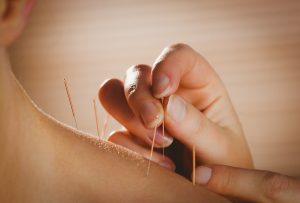
Hypertension is more than elevated numbers on a cuff—it reflects imbalances in vascular tone, stress resilience, and metabolic function. Naturopathic cardiology emphasizes root-cause exploration, individualized botanical protocols, and supportive lifestyle therapies to restore vascular flexibility and nurture heart health.
In this guide, we unveil five naturopathic pillars—functional cardiovascular diagnostics, nitric-oxide–boosting nutrition, vasoactive herbal medicine, stress-modulating mind-body techniques, and circulatory-enhancing movement practices—to create a holistic, long-term hypertension management plan.
Why a naturopathic approach matters for blood pressure
Conventional treatment often focuses solely on symptom suppression. In contrast, naturopathy seeks to optimize endothelial function, reduce oxidative stress, and harmonize autonomic balance, resulting in sustainable blood pressure control without reliance on lifelong pharmaceuticals.
Pillar 1 – Functional cardiovascular diagnostics
Detailed lab panels (including lipid subfractions, inflammation markers, and oxidative stress assays) alongside ambulatory blood pressure monitoring reveal individual vascular patterns. Naturopathic interpretation of these insights guides precision interventions.
Pillar 2 – Nitric-oxide–boosting nutrition
Emphasize nitrate-rich vegetables (beetroot, arugula), amino-acid precursors (l-arginine, l-citrulline), and phytonutrient-packed fruits (pomegranate). These foods enhance endothelial nitric oxide synthase (eNOS) activity, promoting vasodilation and healthy circulation.
Pillar 3 – Vasoactive herbal medicine
Botanical vasoregulators—such as hawthorn, olive leaf, hibiscus, and linden flower—contain flavonoids and polyphenols that relax smooth muscle, reduce arterial stiffness, and support capillary integrity. Customized formulas ensure synergy and safety.
Pillar 4 – Stress-modulating mind-body techniques
Chronic stress drives sympathetic overactivity and endothelial constriction. Integrative practices—like heart-rate variability biofeedback, guided imagery with vascular focus, and adaptogenic tonics (e.g., rhodiola, holy basil)—restore parasympathetic dominance and vascular calm.
Pillar 5 – Circulatory-enhancing movement practices
Low-impact, rhythmic exercises—such as Nordic walking, tai chi, and aquatic movement—optimize shear stress on vessel walls, improve lymphatic return, and support healthy blood pressure. Guided sessions emphasize breathing coordination and mindful pace.
Integrating these pillars into your lifestyle
- Diagnostic mapping: Begin with naturopathic cardiovascular testing and personalized review.
- Dietary strategy: Implement an eNOS-supportive nutrition plan daily.
- Herbal regimen: Cycle botanical vasodilators under professional supervision.
- Mind-body program: Schedule biofeedback and guided relaxation practices 3–5 times per week.
- Movement plan: Incorporate 30–45 minutes of circulatory exercises at least 4 times weekly.
By embracing this naturopathic cardiovascular blueprint, you cultivate resilient vessels, balanced autonomic function, and enduring blood pressure control—laying the groundwork for a vibrant, heart-healthy life.













